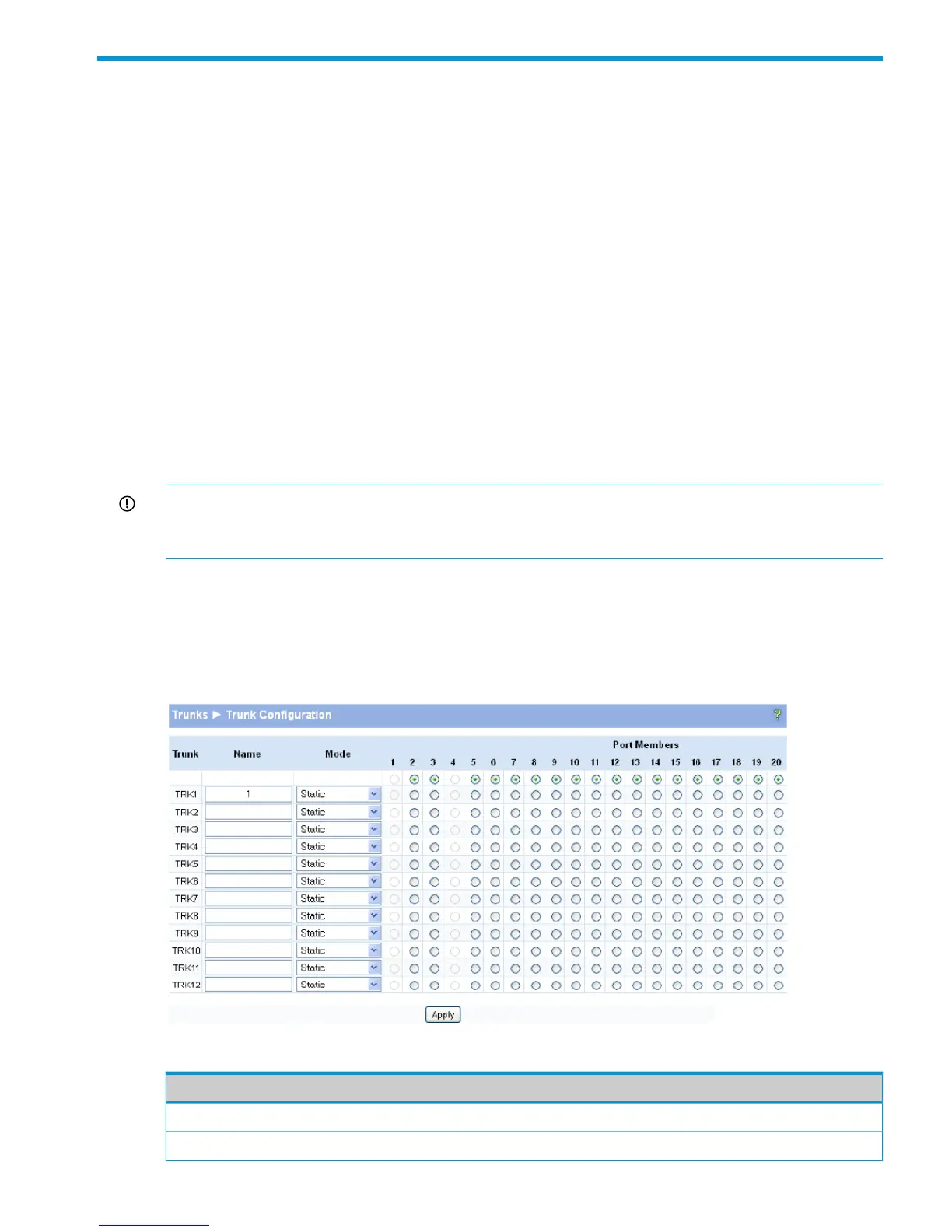6 Trunks
Trunks enable aggregating multiple full-duplex Ethernet links into a single logical link. Network
devices treat an aggregation as if it were a single link, which increases fault tolerance and provides
load sharing capability. You assign the trunk VLAN membership after creating the trunk.
A trunk interface can be either static or dynamic, but not both.
• Dynamic trunks use the Link Aggregation Control Protocol (LACP, IEEE standard 802.3ad).
An LACP-enabled port automatically detects the presence of other aggregation-capable network
devices in the system and exchanges Link Aggregation Control Protocol Data Units (LACPDUs)
through links in the trunk. The PDUs contain information about each link and enable the trunk
to maintain them.
• Static trunks are assigned to a bundle by the administrator. Members do not exchange
LACPDUs. A static trunk does not require a partner system to be able to aggregate its member
ports.
• Members of a trunk must be either all static or all dynamic, and all ports belonging to a trunk
must have the same Full Duplex speed.
Trunk Configuration and Membership
IMPORTANT: Configure port trunking before you connect the trunked links between switches.
Otherwise, a broadcast storm could occur. If you need to connect the ports before configuring
them for trunking, you can temporarily disable the ports until the trunk is configured.
Link Aggregation/Trunking enables one or more full duplex (FDX) Ethernet links to be aggregated
together to form a link aggregation group, such that the networking device can treat this trunk as
if it were a single link.
To display the Trunk Configuration page, click Trunk > Trunk Configuration in the navigation pane.
Figure 29 Trunk Configuration Page
Table 25 Trunk Configuration Fields
DescriptionField
Trunk ID for the settings. “Normal” indicates the port is not part of any trunk.Trunk
Trunk name. 1–15 alphanumeric characters.Name
Trunk Configuration and Membership 43
